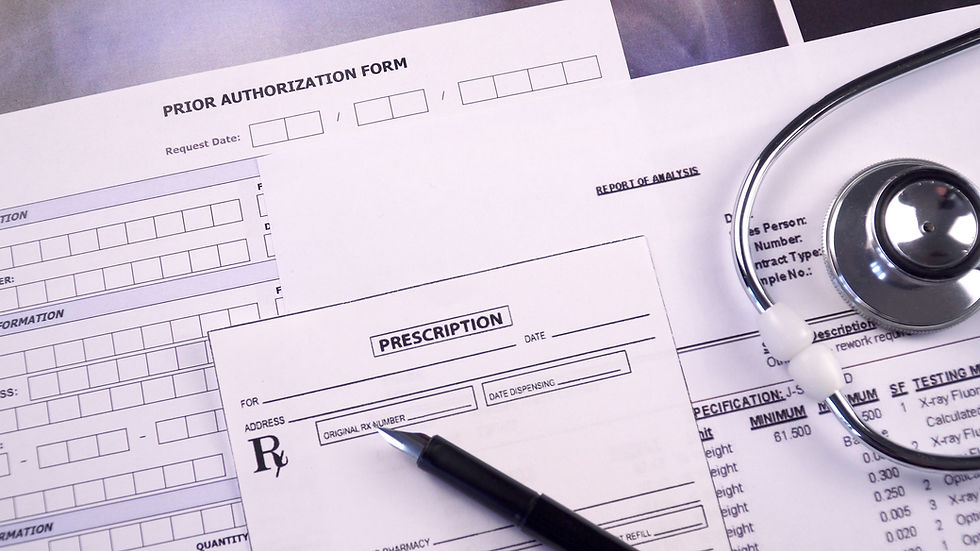Always Get An Insurance Card (Front and Back)
- Practice Solutions
- Dec 20, 2019
- 4 min read
Main Points
Insurance cards are critical to successfully bill insurance
Insurance cards help you to manage your billing A/R
Insurance cards help your biller to speed up payment
There is a lot of information you will need when taking on insurance! At this point, you have applied to the insurance panel, gotten credentialed, marketed your practice, and now you have a patient that is interested in using your services!
This is very exciting because you have a business that people are interested in and are going to start utilizing.
One of the most overlooked parts of the revenue cycle management process is capturing insurance ID cards. One of the reasons why clinicians and clinics are not good at collecting ID cards is because they don't understand the value of having the insurance card (front and back) and why that matters to your top-line revenue.
Here are some reasons why you need to collect a copy of the insurance card and how this will save you and your patient's hundreds of hours talking with the insurance company.
First off, insurance cards are critical to successfully bill insurance. It goes without saying that the number of variables that can impact getting a payment from the insurance company is plentiful.
There are so many places in the revenue cycle management process that can go wrong, that it never hurts to collect more information or communicate more than you feel necessary.
However, getting the patient's insurance and insurance benefits are one of the most important parts of the process. You will use this information to generate claims, and WHEN you run into opposition from the insurance company you can use the information on the ID card to help build your case for payment.
Here is a practical workflow that you can use when collecting patient insurance cards:
Ask for a copy of the card from the patient
Scan an electronic copy of the card
Import the card into your electronic health record (EHR) system
Reference this card when calling insurance or entering in patient information
Another tip that is useful is to enter the patient name exactly how it is showing on the insurance card. If the insurance company gets a claim with a nickname or a different spelling of the name than what is on the card, the claim will be denied. So you will want to pay attention to the details when you are entering the patient's information and submitting claims to the insurance company.
Second, insurance cards help you manage your A/R (accounts receivables). Do you have money that is owed to you by the insurance company and you are not sure why? Do you often get confused by the insurance company's rules and regulations?
The sure-fire way to cut through that ambiguity is to use the phone number on the back of the patient's insurance card. It is no surprise that the insurance companies have created a labyrinth of complexity around getting paid for claims.
One way that insurance companies have created a mess for reimbursement is by hiring subcontractors or carved-out insurance plans for mental health benefits.
Basically, an insurance company like Blue Cross Blue Shield will hire another insurance company like Beacon Health Options to manage and administer the mental health benefits. However, the insurance card may or may not tell you this information.
In order to find out what this information is, you will need the back of that specific patient's insurance card. The number on the back of that card will tell you exactly what insurance company handles the insurance benefits.
This will create fewer accounts receivables for you to manage and will help you or your biller to get claims to resolution as fast as possible.
Finally, insurance cards help your biller to speed up payment
Insurance companies have a lot of phone numbers! As insurance plans have grown so have the number of points of contact that you can have with an insurance company. Because of this complexity, it is important for each patient to come to your office prepared with their insurance card (the front and back).
Here is why it is important to have the front and the back of the insurance card:
First, the back of the insurance card has the phone number to call if there is an issue and it has the claims mailing address. This helps your biller if they have an issue, but it also tells them where to send claims. Obviously, sending claims is a critical part of what a biller does and they can't do that without an accurate claims location.
Second, the front of the insurance card spells out the patient's name and the correct insurance ID. Both of those are important so that the claims are accepted. Your patient may go by another name and may list a different spelling of their name, but it is important that the insurance receive claims exactly how the name appears on the card.
Last, having an insurance card helps mitigate the risk of not getting paid. Not getting paid is not an option, so requiring your patients to come to the office with actual proof that they have insurance is necessary to take them on and get paid for your services.
There are a lot of steps to the claims process! Make sure that you are covering your bases by having a copy of the insurance card and keep the front and the back!



















































Comments